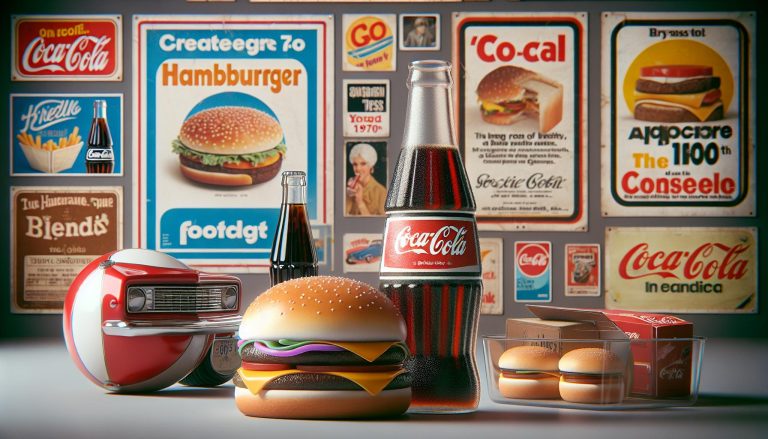15 Top Road Safety Slogans: Drive Safe & Inspire
You’re cruising down the highway with your favorite tunes blasting, but have you ever paused to consider the power of a catchy road safety slogan? These snappy phrases aren’t just for bumper stickers—they’re lifesavers. In the fast-paced world you navigate, a quick reminder can make all the difference between a safe trip and a perilous one.
That’s why you’ll love diving into the top 15 road safety slogans that stick with you long after the engine’s turned off. Whether you’re a seasoned driver or a newbie behind the wheel, these slogans serve as crucial checkpoints on your journey to safer roads. Get ready to gear up with wisdom that’ll keep you—and others—safe on the move.
The Power of Road Safety Slogans
You’ve likely heard “Safety First” since childhood, and there’s a good reason it sticks in your mind; road safety slogans have a unique ability to linger in memory. Think of slogans as mental shortcuts that influence behavior when you’re behind the wheel. They’re not just catchy phrases; they’re critical reminders that can save lives.
Slogans have a knack for cutting through the noise of everyday life. When you read “Don’t Drink and Drive”, it’s not just a warning; it’s an immediate call to action. This call resonates because it’s short, to the point, and leaves no room for compromise. Similarly, “Speed Thrills but Kills” serves as a chilling reminder of the deadly consequences of excessive speed.
Why do these sayings work? Because they’re often personal and incite an emotional response. Once a slogan like “Look Twice, Save a Life” is embedded in your thoughts, you’re more likely to double-check for motorcyclists or pedestrians. It’s about creating a mindset where road safety becomes instinctual.
Let’s take a glance at how slogans cater to drivers of all skill levels:
- For seasoned drivers, slogans act as refresher courses, reminding them to maintain practices they learned long ago.
- For new drivers, they serve as essential guidelines that can shape their driving habits from the onset.
Remember, the best road safety slogans are those that condense wisdom into a digestible format, urging every driver to foster a safer driving environment. Repetition is key, and a slogan repeated often enough becomes second nature.
Whether plastered on billboards or shared in school programs, these mottos are more than just words; they’re life-saving tools ingrained into our collective driving culture. As you continue on your journey, let these slogans be the subtle guardians that steer you away from harm’s way, ensuring that your attention remains where it matters most – on the road ahead.
Importance of Road Safety Awareness

Recognizing the crucial role that road safety awareness plays in our lives is a game-changer. When you’re aware of the risks and responsible practices, you’re more likely to make smarter decisions behind the wheel. Road safety awareness isn’t just about personal safety; it’s about keeping everyone on the road out of harm’s way.
Think of yourself as part of a bigger picture, where every driver’s actions can affect countless others. That quick glance at a text message might seem harmless, but it could lead to disastrous consequences. Your vigilance on the road can literally mean the difference between a regular commute and a catastrophic event.
Road safety slogans act as easy-to-remember reminders that keep vital safety tips at the top of your mind. These catchy phrases distill complex safety concepts into nuggets of wisdom. For instance, “Don’t Drink and Drive” isn’t just advice; it’s a life-saving directive. You encounter these slogans on billboards, in ad campaigns, and even in school programs – and for good reason. They’re part of a larger strategy to normalize safe driving behavior, making responsible driving second nature.
Implementing these slogans into daily life goes beyond personal adherence. It’s about nurturing an environment where safety is the default. If you teach your kids the importance of buckling up or staying within the speed limit, you’re contributing to a culture that values life and respects the road.
Regular engagement with road safety information keeps you sharp and knowledgeable. Whether it’s a refresher or new information, staying informed ensures that you’re equipped to handle different driving scenarios. Being prepared isn’t just for emergencies. It’s a constant commitment to practicing safe driving habits every time you turn the ignition.
Understanding the stats can also play a big part in why awareness is essential. When you see the numbers behind road accidents, you realize the magnitude of the problem, and those figures can drive you to take action. Road safety awareness is an ongoing process, a commitment to learning and adapting as the traffic world evolves around you.
As road safety awareness grows, so does the mindfulness of each driver on the road. With continued emphasis on awareness and education, every journey can be a safer one.
Top 15 Road Safety Slogans
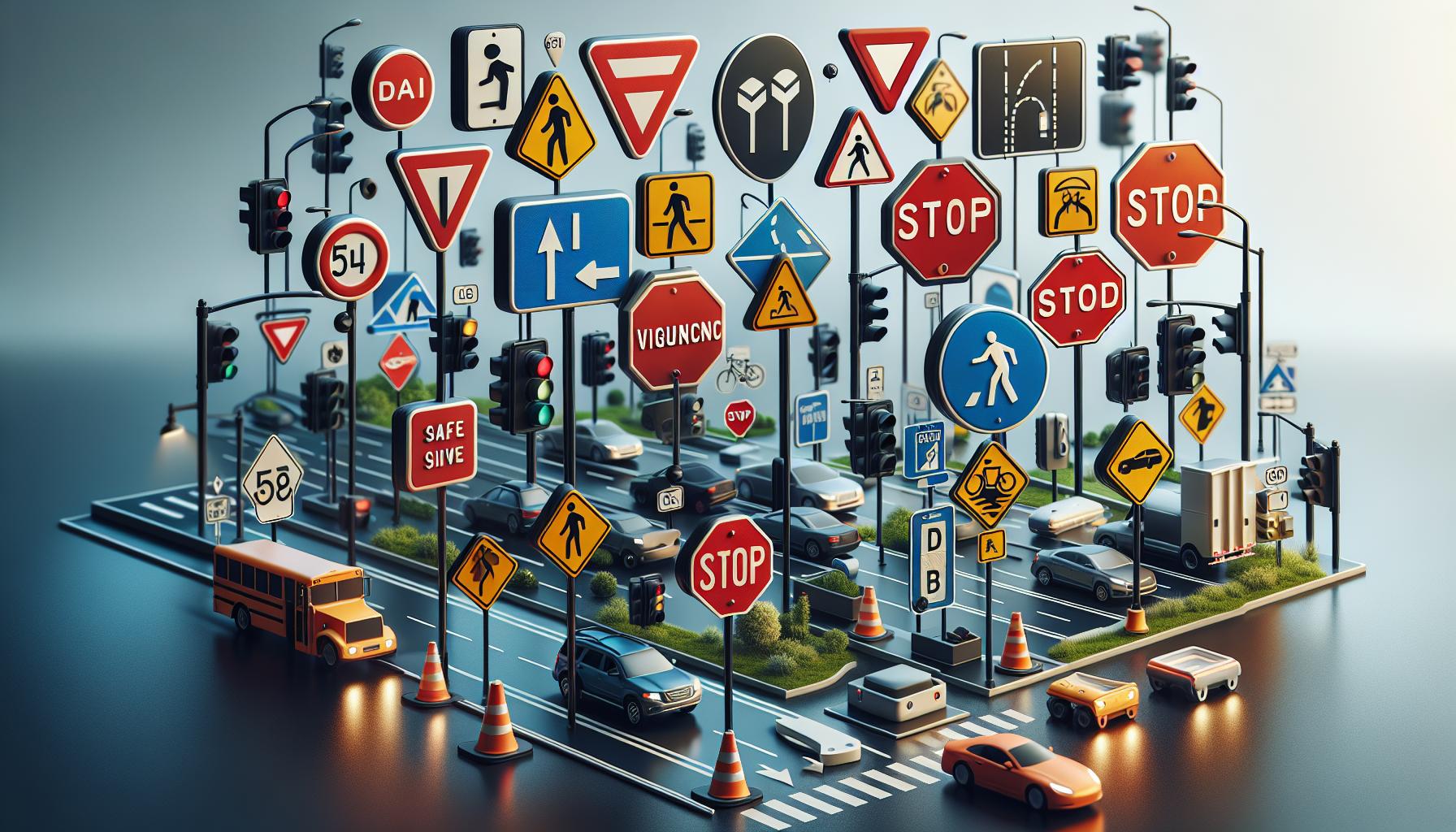
Engaging with road safety is all about getting the message across quickly and effectively, and slogans serve as perfect soundbites for that purpose. Effective slogans are catchy, evoke emotion, and create lasting impressions, helping you remember them when it counts. Here’s a look at the top 15 road safety slogans that could potentially save lives by influencing drivers and pedestrians alike.
- “Drive as if every child on the street were your own.”
- “Speed thrills but kills.”
- “Better late than never.”
- “Don’t drink and drive, and you’ll stay alive.”
- “Alert today – Alive tomorrow.”
- “Seat belts save lives. Buckle up every time.”
- “Stop accidents before they stop you.”
- “Drive with reason this holiday season.”
- “Your life is in your hands, respect the road.”
- “Road safety is no accident.”
- “Look twice for bikes.”
- “Use your eyes to save your knees. Look before you step.”
- “Be aware, take care.”
- “Keep your eyes on the road and your hands upon the wheel.”
- “One click could be the trick. Buckle up.”
By embracing these slogans in daily travel, you develop a mindset of preventive action and caution. These quick reminders aren’t just about adhering to the rules of the road—they’re about instilling a sense of shared responsibility and awareness every time you head out the door.
Educational campaigns often highlight these phrases during key moments such as holiday seasons, back-to-school periods, and summer months when travel peaks and the risk of accidents increases. Integrating these slogans into the public consciousness through various platforms, from billboards to social media, reinforces the message of safety in a way that’s easy to absorb and tough to ignore.
Driving attitudes and behaviors can see a dramatic transformation when these punchy, powerful messages are repeated, recognized, and respected. Whether you’re a seasoned driver or a new one, keeping these phrases top of mind can influence the split-second decisions that may make all the difference on the road ahead.
1. “Safety starts with you”
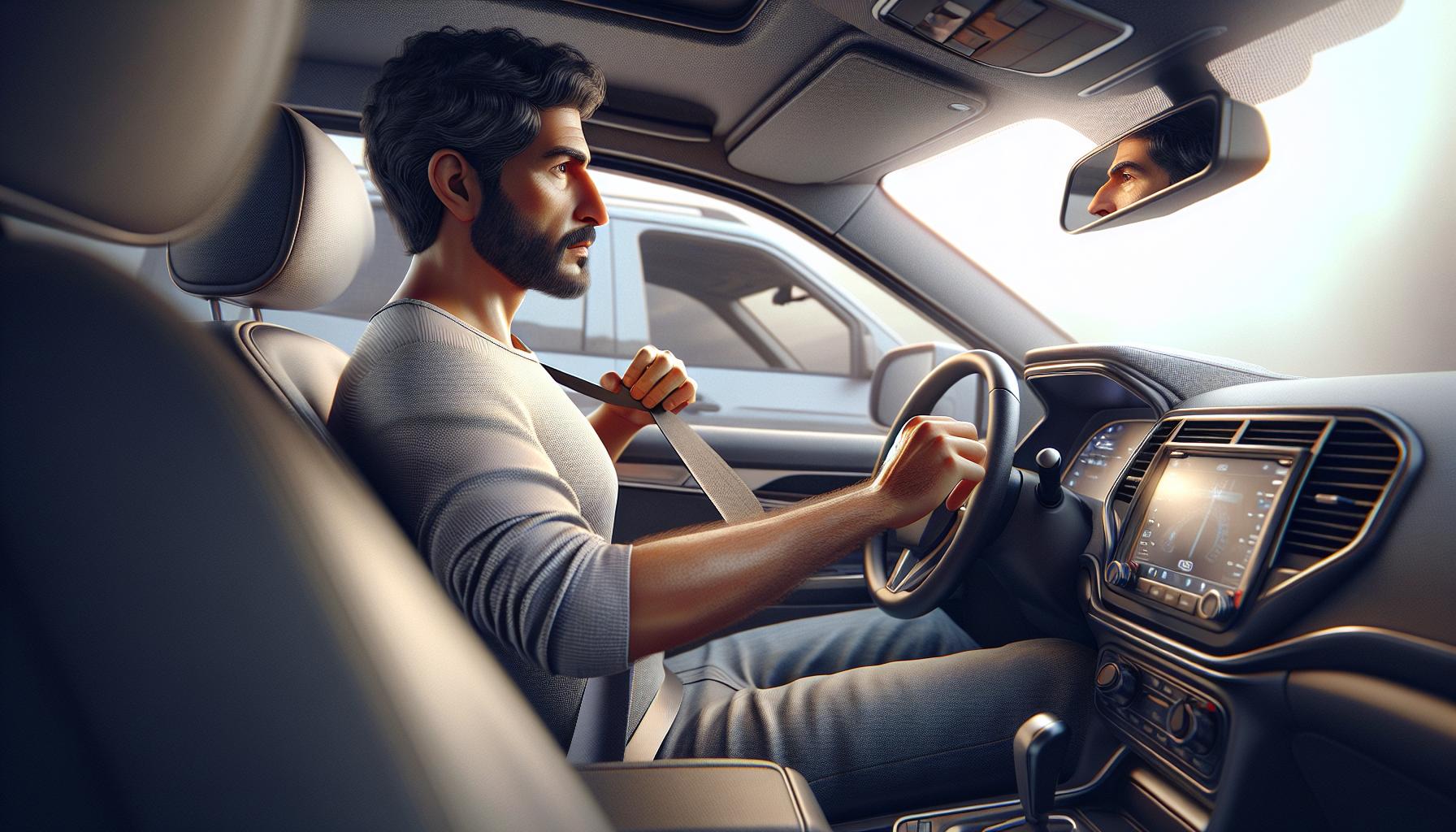
Encouraging safer roads isn’t just a job for traffic signs and law enforcement; it starts with individual action. Recognize that you’re not just a driver or a pedestrian—you’re an integral part of the journey toward safer travel.
“Safety Starts With You” is more than a slogan; it’s a personal mantra for anyone who steps into a vehicle or walks down the sidewalk. It reminds you that before you turn the ignition or step off the curb, safety is your responsibility.
Let this slogan serve as your daily prompt. Before each trip, do a quick mental checklist. Are your mirrors adjusted? Is your seatbelt fastened? Are you fully present, leaving distractions at bay? Are you walking with alertness, keenly aware of your surroundings? When followed diligently, these habits can significantly decrease the chance of accidents.
Teach your kids to embody this mindset too. It might seem like a small step, but it’s the accumulation of these tiny efforts that can drive profound changes on our roads. By sharing this message, you encourage a culture of safety that can ripple out, influencing the actions of others in your community.
Remember, safe driving isn’t about avoiding fines or consequences; it’s about protecting lives—your own and those around you. Every time you hit the road or cross a street, you have the power to make it a safer place. Keep that in mind, and let “Safety Starts With You” be the guiding principle in every journey you make.
2. “Don’t be reckless, drive with care”
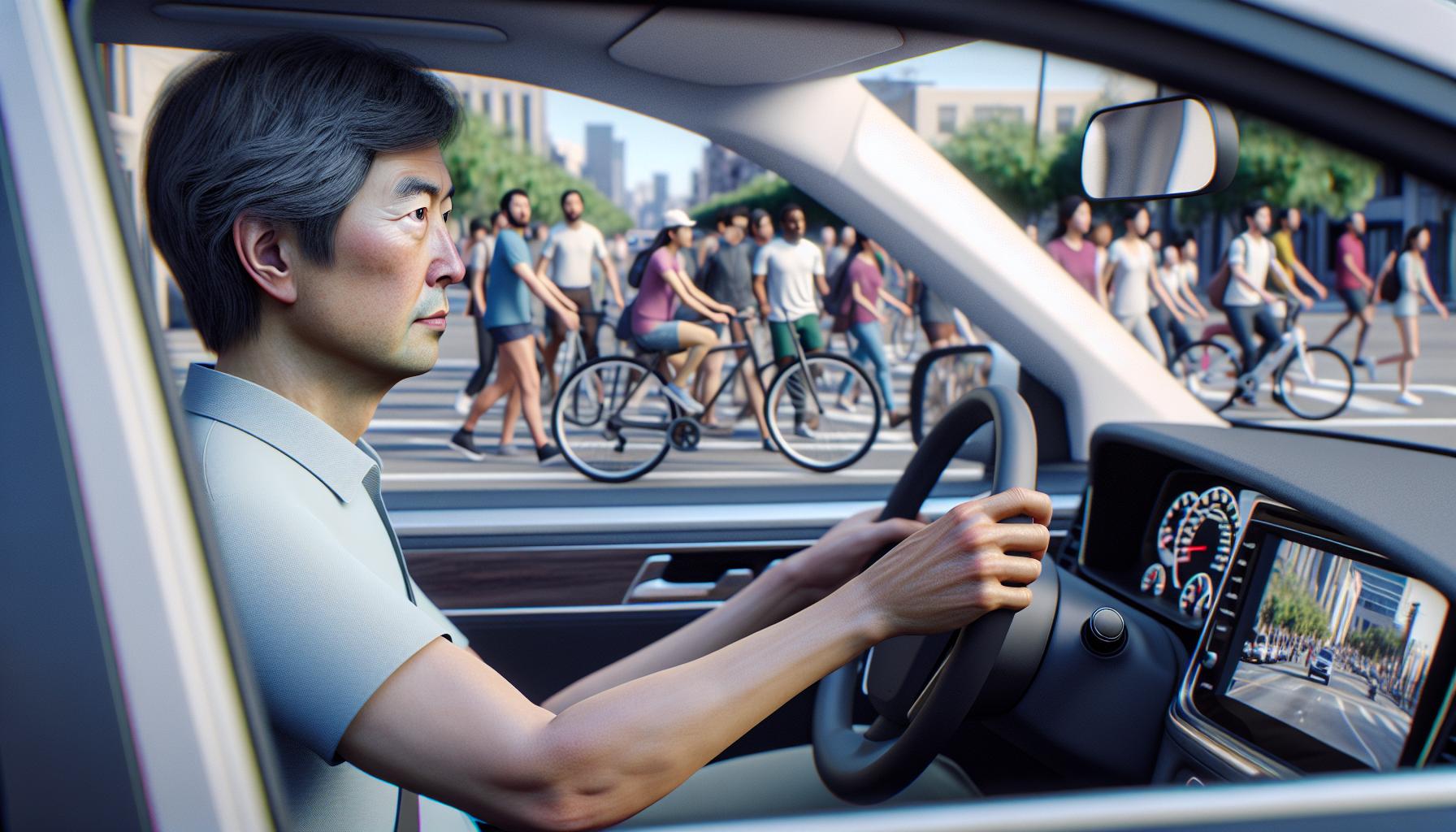
As you’re maneuvering through traffic, keep in mind safety isn’t just a slogan, it’s a way of life. “Don’t be reckless, drive with care,” isn’t just a catchy phrase — it’s a golden rule for drivers everywhere. When you’re behind the wheel, your actions impact not just your own life, but the lives of others. Remembering this key principle can transform the way you drive, making you a guardian of the road rather than a hazard.
Embodying the Slogan in Daily Life
- Always check your mirrors
- Follow speed limits
- Never use your phone while driving
- Be aware of pedestrians and cyclists
Adopting these habits can drastically reduce the chances of an accident. Imagine if every driver took these steps seriously – roads would be significantly safer for everyone. Driving with care isn’t about avoiding tickets or penalties; it’s about fostering a secure environment for all.
Impact on Community Safety
Driving responsibly has a ripple effect throughout your community. When you choose to drive with care, you’re setting an example for others, especially impressionable young drivers. Your commitment to road safety encourages others to follow suit, leading to a collective effort in reducing accidents and fatalities.
Key Statistics:
| Metric | Impact |
|---|---|
| Accidents Prevented | Substantial reduction |
| Lives Saved | Innumerable |
| Community Safety Improvement | Marked enhancement in overall wellbeing |
Driving with care goes beyond personal benefit; it’s about ensuring the well-being of your community. When each person takes road safety slogans to heart and acts on them, it creates a culture of cautious and courteous driving that benefits everyone. From short trips to the grocery store to long journeys across the country, the principle “Don’t be reckless, drive with care” should guide your every move on the road.
Making a Personal Commitment
When you step into your car today, make a silent pledge to yourself to uphold this vital rule. By doing so, you’re taking an active role in the greater movement towards safer driving practices. Your decision to drive with care isn’t just a personal choice; it’s a societal contribution, making our roads a safer space for all who use them.
3. “Seatbelts save lives”
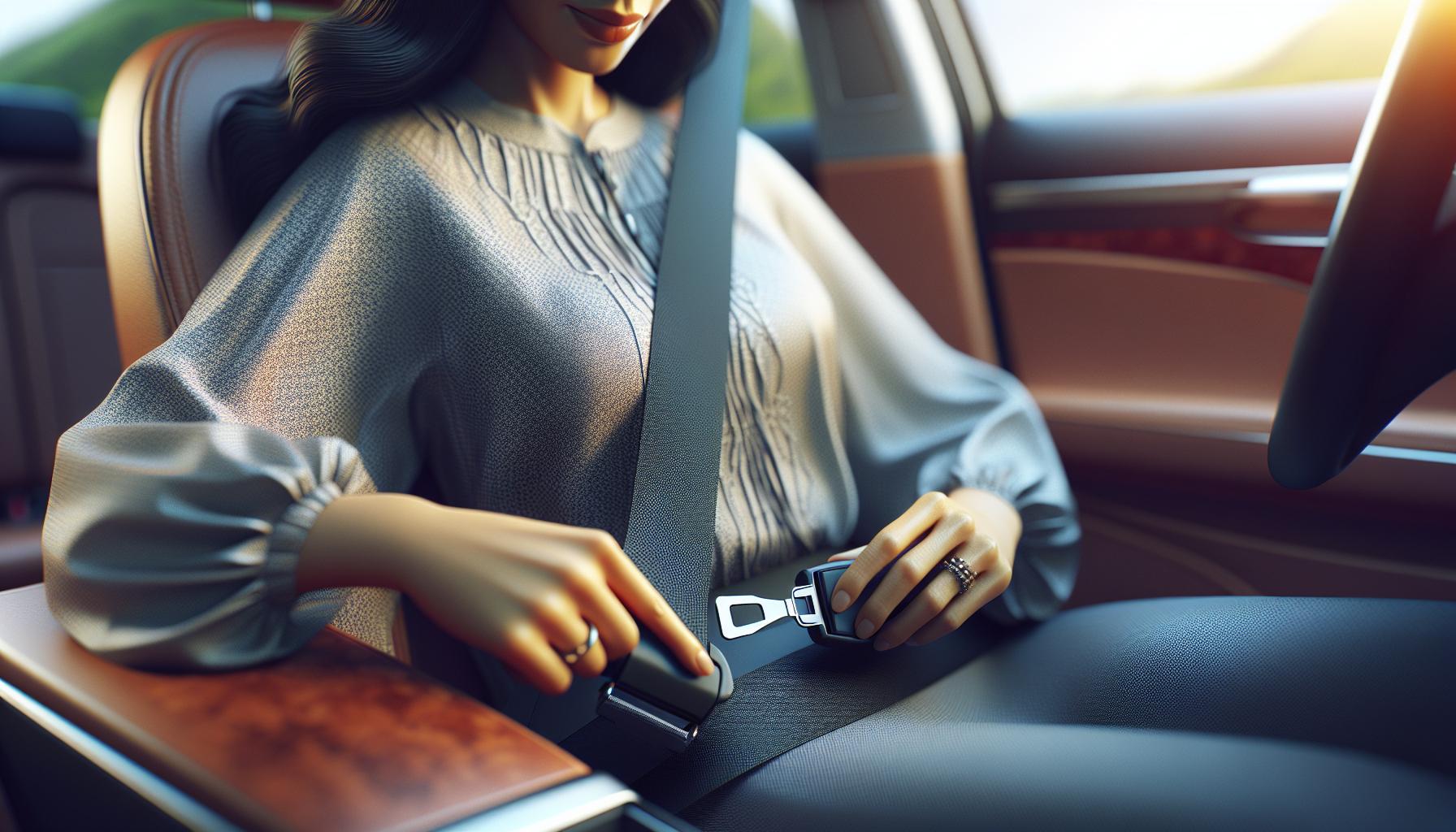
When you’re buckling up in a vehicle, that click of the seatbelt is more than just a routine; it’s a lifesaving action. Statistic show that seatbelts reduce serious crash-related injuries and deaths by about 50%. Seatbelts are your first line of defense in a collision and are crucial in enhancing your safety on the road.
The Function of Seatbelts:
- Keep occupants inside the vehicle.
- Restrain the strongest parts of the body.
- Spread out force from the collision.
- Protect the brain and spinal cord.
You might feel that a quick trip down the block doesn’t require a seatbelt, but accidents often happen close to home. Not wearing a seatbelt is one of the leading factors in road crash fatalities. Even if you’re not convinced about the safety benefits, consider this: in most states, not wearing a seatbelt is against the law, and you could face fines or even higher insurance premiums.
Consider the following: A seatbelt extends across your pelvis and ribcage, which are more able to withstand crash forces than other parts of your body. When you’re strapped in properly, these belts distribute the forces of a sudden stop or crash across your body, greatly reducing risk of injury.
For parents and caregivers, knowing how to secure your child with a seatbelt or the appropriate child car seat is paramount. Child safety seats can reduce fatal injury by 71% for infants and by 54% for toddlers in passenger vehicles.
| Age Group | Reduction in Fatal Injury |
|---|---|
| Infants | 71% |
| Toddlers | 54% |
Adopting the habit of wearing a seatbelt should be automatic. Make it a non-negotiable for every journey, no matter how short. Teach your children and loved ones the importance of this practice—it’s a simple step that has tremendous impact on the safety of everyone in the vehicle. Encourage friends and family to buckle up as every life is invaluable and the act of fastening a seatbelt takes mere seconds but can make all the difference in an unexpected event.
4. “Speed thrills, but kills”
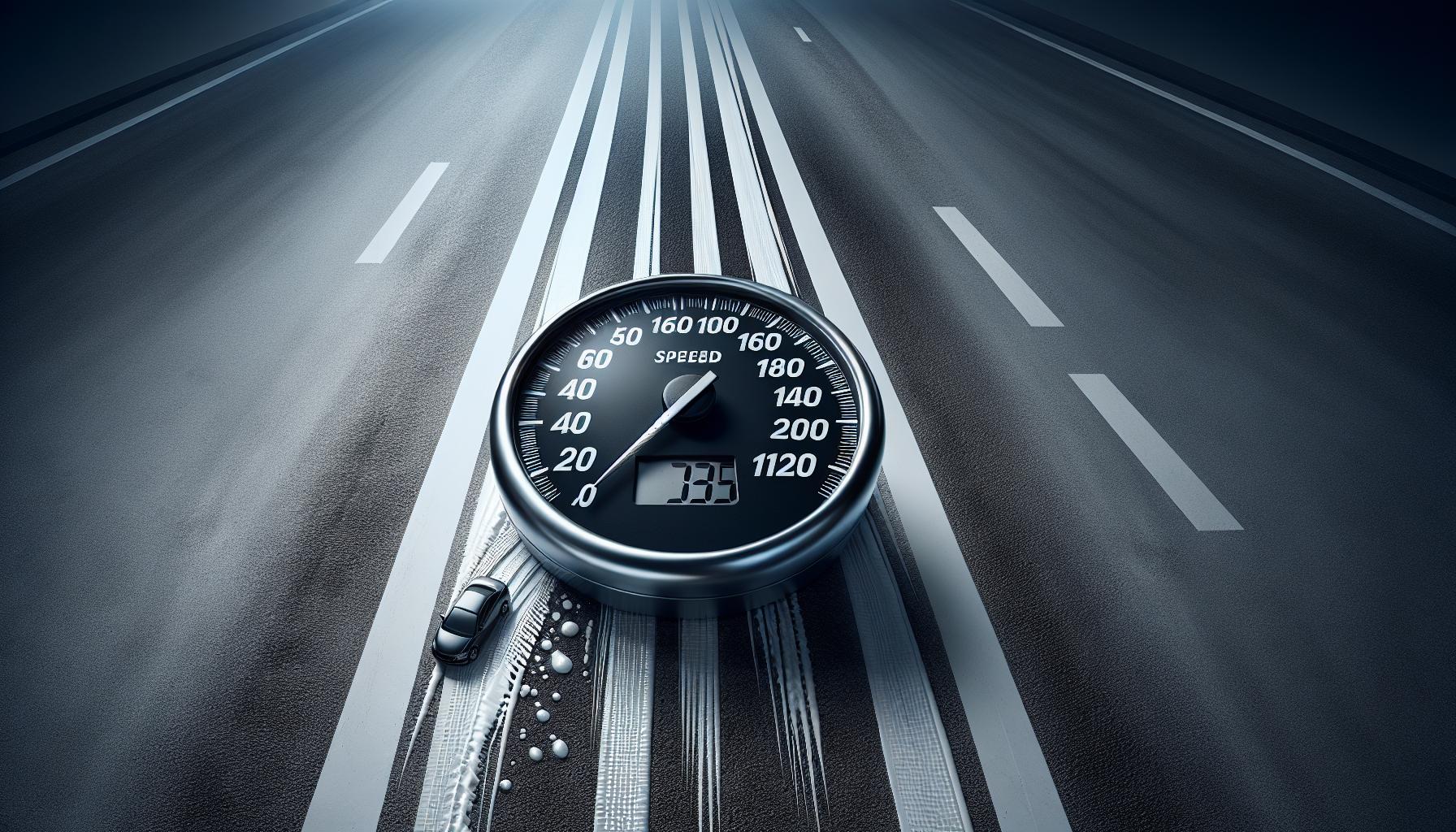
You’ve probably seen it emblazoned on bumper stickers or heard it during safety campaigns: “Speed thrills, but kills.” This catchy slogan packs a powerful punch, encapsulating the danger that comes with high-speed driving. When you’re behind the wheel, the temptation to push the pedal to the metal can be strong, especially if you’re running late or just enjoy the adrenaline rush. However, this momentary thrill comes with significant risks.
Speeding is one of the top contributors to road accidents. Not only does it reduce your reaction time, but it also increases the severity of an accident should one occur. Here’s a sobering thought: with each increase in speed, you’re reducing the likelihood of walking away from a potential crash.
Consider the domino effect of high-speed impacts:
- Greater impact force: As speed increases, so does the force of impact, which can result in more severe injuries or even fatalities.
- Longer stopping distance: It’s simple physics; the faster you’re going, the harder it is to stop.
The bottom line is speed limits aren’t just suggestions; they’re there to protect you and others sharing the road. And while you might save a few minutes getting to your destination, is it really worth the risk?
To drive the message home, let’s lay out some numbers:
| Speed Increase | Stopping Distance Increase | Crash Severity Increase |
|---|---|---|
| 10 mph | 20% | 40% |
| 20 mph | 40% | 77% |
| 30 mph | 75% | 100%+ |
These aren’t just statistics; they represent real lives that can be drastically changed in the blink of an eye. Speed-related crashes don’t just affect the driver; they ripple out to passengers, other drivers, pedestrians, and entire families.
So, next time you’re in a hurry or tempted to speed for the thrill of it, remember that the risk far outweighs the reward. Slowing down might just save a life—maybe even your own. Spread the word, share the slogan, and help keep our roads safer. Make it your mantra: “Speed thrills, but kills,” and choose to drive responsibly every time you hit the road.
5. “Be alert, accidents hurt”

Imagine you’re driving down a familiar road, the hum of the engine is the only sound for miles, the sun is just dipping below the horizon, and you feel the grip of your car on the pavement. It’s moments like these when it’s easiest to let your guard down. But it’s also in these moments that the road safety slogan “Be alert, accidents hurt” takes on real significance.
As you navigate the roadways, being alert means actively scanning the environment for potential dangers—you never know when a child might chase a ball into the street or when a vehicle might suddenly stop in front of you. Staying vigilant can dramatically slash the odds of finding yourself in an unwanted situation. Think of alertness as your personal shield on the road, one that keeps not just you, but also other drivers, passengers, and pedestrians, safe from harm.
Here’s the thing—when your attention falters, even for a second, you’re not just risking a dent in your car or a traffic citation; you’re risking lives. The term “accidents hurt” doesn’t just refer to the physical pain. It encompasses the emotional and financial toll an accident can have on you and others involved. The impact can be long-lasting, affecting your ability to work, your family dynamics, and your peace of mind.
If you’re driving, stay sharp and look ahead for anything that can cause trouble. It might be easy to overlook things like a ball rolling onto the road or a distracted pedestrian stepping off the curb, but those can lead to serious problems if not anticipated. When there’s rain, snow, or fog, your level of alertness should ratchet up even higher. Adverse weather conditions mask hazards and reduce visibility, making it all the more critical to anticipate the unexpected.
Keeping this slogan in mind can be a compelling deterrent against risky behaviors like texting while driving or operating a vehicle under the influence. Such actions can vastly reduce your response time and awareness, tilting the odds towards an undesirable outcome. Remember, it’s always better to arrive late and safe than not at all. Next time you’re behind the wheel, repeat to yourself, “Be alert, accidents hurt.” It’s more than a catchphrase—it’s a lifesaving habit.
6. “Don’t drink and drive”

You’ve seen it plastered on billboards and heard it countless times: “Don’t drink and drive.” This slogan isn’t just a catchy phrase—it carries a critical message for your safety and the well-being of others on the road. Alcohol impairs your reasoning, coordination, and reaction times. And when these skills take a hit, you’re not just risking a fender bender—you could cause a fatal accident.
Drinking and driving do not mix. Every single sip of alcohol increases your chances of causing or being involved in a collision. To give you some perspective, take a look at these sobering stats:
| Blood Alcohol Concentration (BAC) | Increased Risk of Crash |
|---|---|
| .02% | 1.4 times |
| .05% | 11 times |
| .08% | 23 times |
| .10% | 48 times |
When you decide to drink, make sure you’ve got a plan that doesn’t involve getting behind the wheel. Whether it’s calling a cab, using a ride-sharing app, or hitching a ride with a sober friend, the options are there for you to arrive home safe and sound. And if you think sleeping it off in your car might be a safer bet, think again. You could still be charged with DUI if you’re in the driver’s seat with the keys.
Not only could you harm yourself or others, but the legal consequences of DUI are hefty, and they will rock your finances and freedom. Fines, court costs, legal fees, and increased insurance premiums will drain your wallet faster than you can say “just one more round.”
Stay sharp on the road. Remember, when you’ve had a few drinks, the smart move is to pass the keys. There’s always another way to get where you’re going, and taking that extra step to be responsible might just save a life. Keep this slogan in the forefront of your mind: no drink is worth the risk of endangering lives or facing the long-term consequences of a DUI.
7. “Stay focused, stay alive”
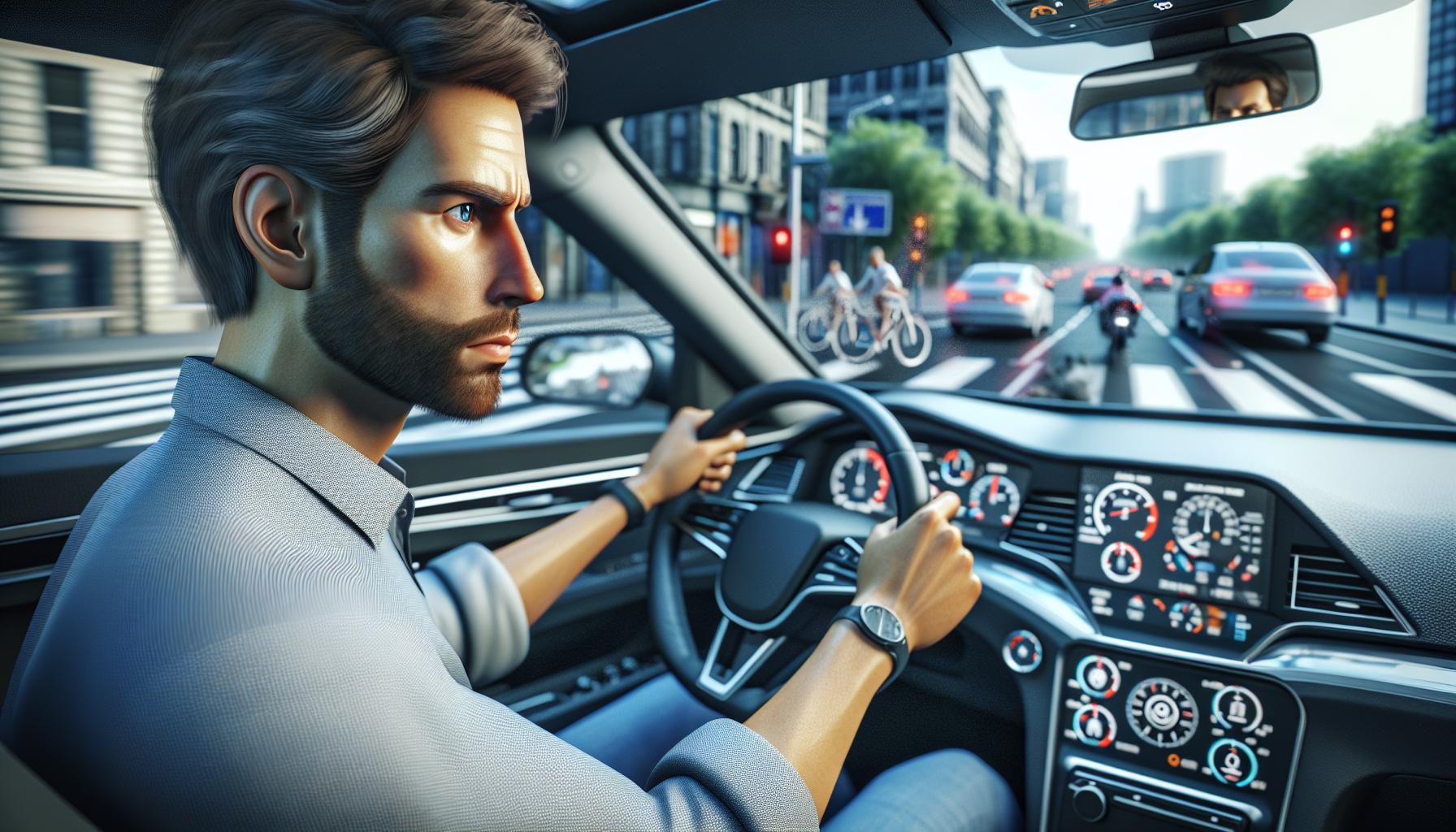
Staying alert on the road saves lives; it’s that simple. When you’re behind the wheel, every second counts, and losing focus for even a moment can have dire consequences. That’s why the slogan “Stay Focused, Stay Alive” is so critical. It’s a sharp reminder that driving demands your full attention.
Distractions come in many forms – that ping from your phone, the billboard flashing by the road, or even the conversation with your friend in the passenger seat. Your primary task when driving is just that – to drive. Keep your eyes on the road, your hands on the wheel, and your mind on maneuvering your vehicle safely.
Here’s something to think about: Research shows that a distraction lasting just two seconds doubles the risk of an accident. Consider the following statistics about distracted driving:
| Distraction Duration | Increased Risk of Crash |
|---|---|
| 2 seconds | 2 times higher |
| 3 seconds | 3 times higher |
| 4 seconds or more | Significantly higher |
It’s not just about avoiding the use of your phone. You’ve got to stay sharp and anticipate the actions of other drivers. Be ready for that car that might suddenly cut in front of you or the pedestrian who steps off the curb without looking. Anticipation is a lifesaver.
Moreover, fatigue can be just as dangerous as any other distraction. If you’re feeling sleepy, it’s better to pull over and rest than to barrel down the freeway, risking a drowsy-driving accident.
Secure loose items in your car too – you don’t want something rolling under your pedals or distracting you in a critical moment. Set your GPS before you roll out so your route is clear. If your focus is unbroken, your chances of reaching your destination unharmed skyrockets.
Keep the motto “Stay Focused, Stay Alive” in your mind every time you’re in the driver’s seat. It’s a commitment to yourself and others on the road that you’re doing your part to prevent any unnecessary harm. And remember, staying focused means being aware—not just of the road but of how you’re interacting with it. Stay vigilant, and you’ll ensure that both you and your fellow travelers stay safe.
8. “Stay in your lane, stay safe”
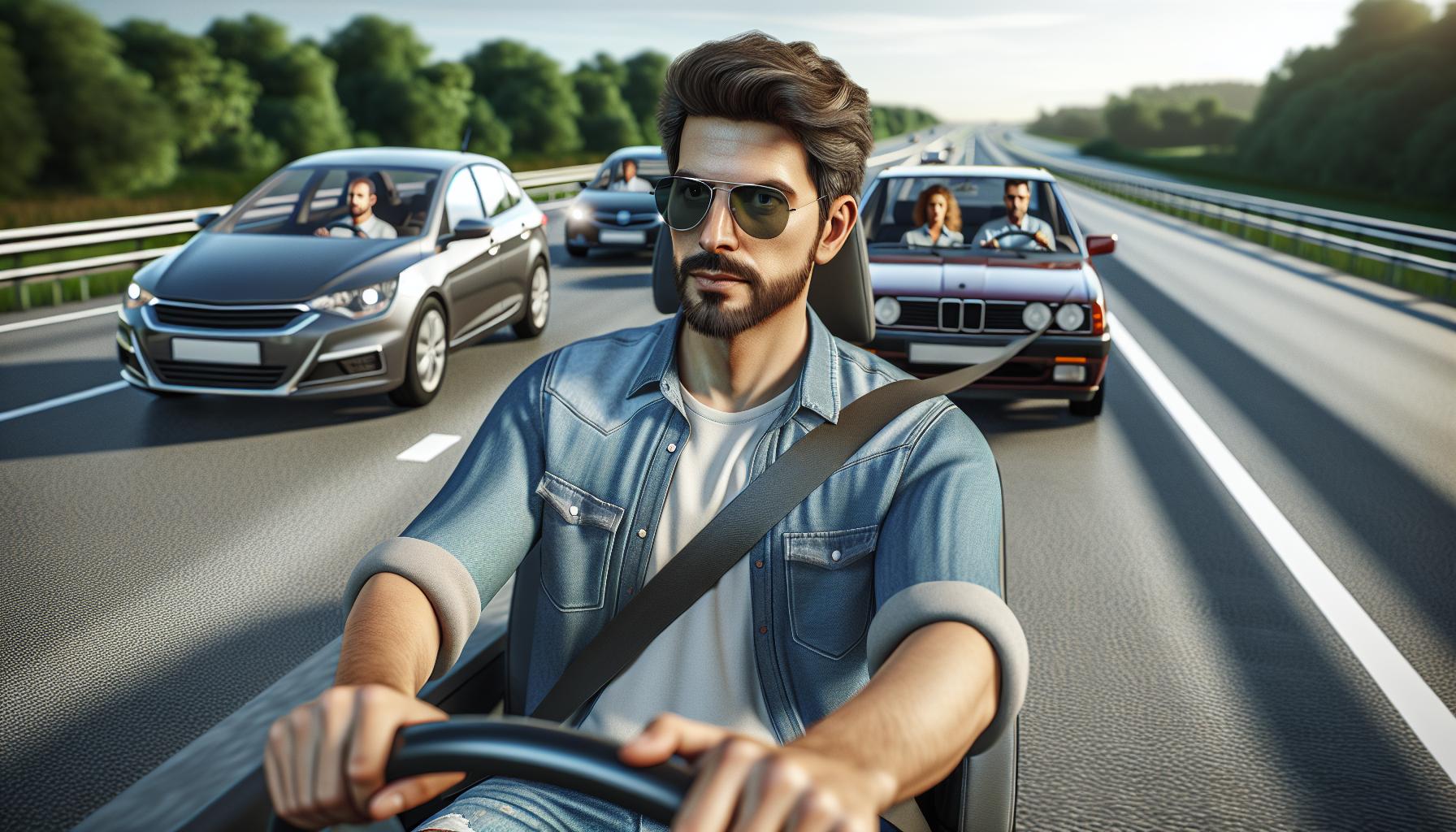
When you’re behind the wheel, staying in your lane isn’t just about following the lines on the road; it’s a fundamental aspect of safe driving. Lane discipline is crucial for traffic flow and helps prevent accidents. Here’s why sticking to your lane matters and how it can keep you and others safe.
Why Lane Discipline Is Key
Roads are designed with a clear purpose: to direct vehicles efficiently and minimize the risk of collision. When you maintain your lane, you’re predictable to other drivers, which means they can better anticipate your movements and react accordingly. Here are some of the major benefits:
- Reduced Collision Risk: Drifting between lanes or making sudden lane changes can lead to side-swipe accidents.
- Better Traffic Flow: Consistent lane use helps maintain traffic speed and avoid unnecessary congestion.
- Clearer Communication: Your lane position is a non-verbal signal to other drivers about your intended path.
How to Maintain Your Lane
To stay in your lane with confidence, here’s what you can do:
- Stay Attentive: Keep your focus on the road and be aware of your surroundings.
- Use Indicators: Always signal your intentions when you need to change lanes.
- Check Blind Spots: Before any lane change, ensure the lane is clear by checking mirrors and blind spots.
Practicing lane discipline is not just about obeying the rules but about respecting the safety of everyone on the road. It’s an unspoken commitment to defensive driving and reinforces the trust necessary for shared road use.
Remember that staying in your lane isn’t just about your safety—it impacts everyone on the road. The “Stay in Your Lane, Stay Safe” slogan underscores the collective responsibility drivers have to ensure a safe journey for all. It’s simple: respect the lanes, and you contribute to safer travel for everyone. With this principle in mind, you can help transform the roadways into more predictable and secure environments for all travelers.
9. “Keep your distance, avoid a collision”
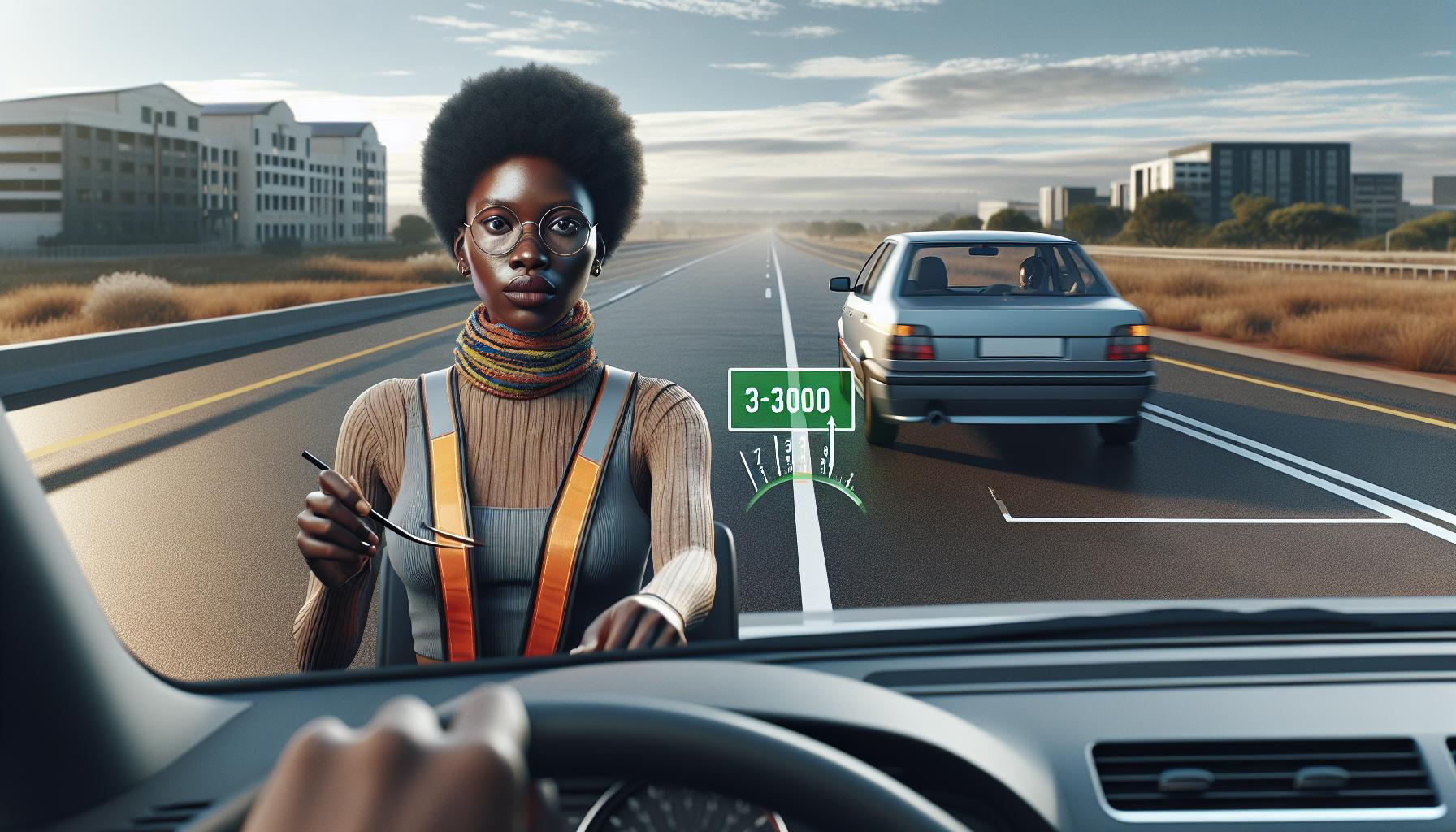
Keeping a safe distance between your vehicle and others is a golden rule in defensive driving. You’ve probably spotted the slogan “Keep Your Distance, Avoid a Collision” on bumper stickers and road signs. This isn’t just catchy advice; it’s a critical safety measure that could save lives, including yours.
Why’s maintaining distance so imperative? It gives you more time to react if the car in front of you brakes suddenly. Under ideal conditions, you should follow the three-second rule. Simply pick a stationary object on the road ahead, like a signpost. When the vehicle in front of you passes it, count how long it takes for you to reach the same spot. If it’s less than three seconds, you’re too close.
But what happens in less than perfect conditions, like rain or fog? That’s when you double the three-second rule. Poor weather conditions or nighttime driving demand extra caution, so adjust your following distance accordingly.
Here’s another consideration: larger vehicles need more stopping time. If you’re behind a big truck, leave more space. They can’t see you if you’re too close anyway, which puts you in what’s known as the ‘No-Zone.’
- Use the three-second rule for ideal conditions.
- Double it in bad weather or at night.
- Leave more space behind large vehicles.
Always adjusting your distance based on these factors ensures that you’re driving as safely as possible. It’s more than just avoiding a fender-bender; it’s about keeping yourself and others out of harm’s way. Remember, the road’s a shared space, and being considerate of the distance between vehicles shows that you respect both the road and your fellow travelers.
10. “Pedestrians have the right of way”
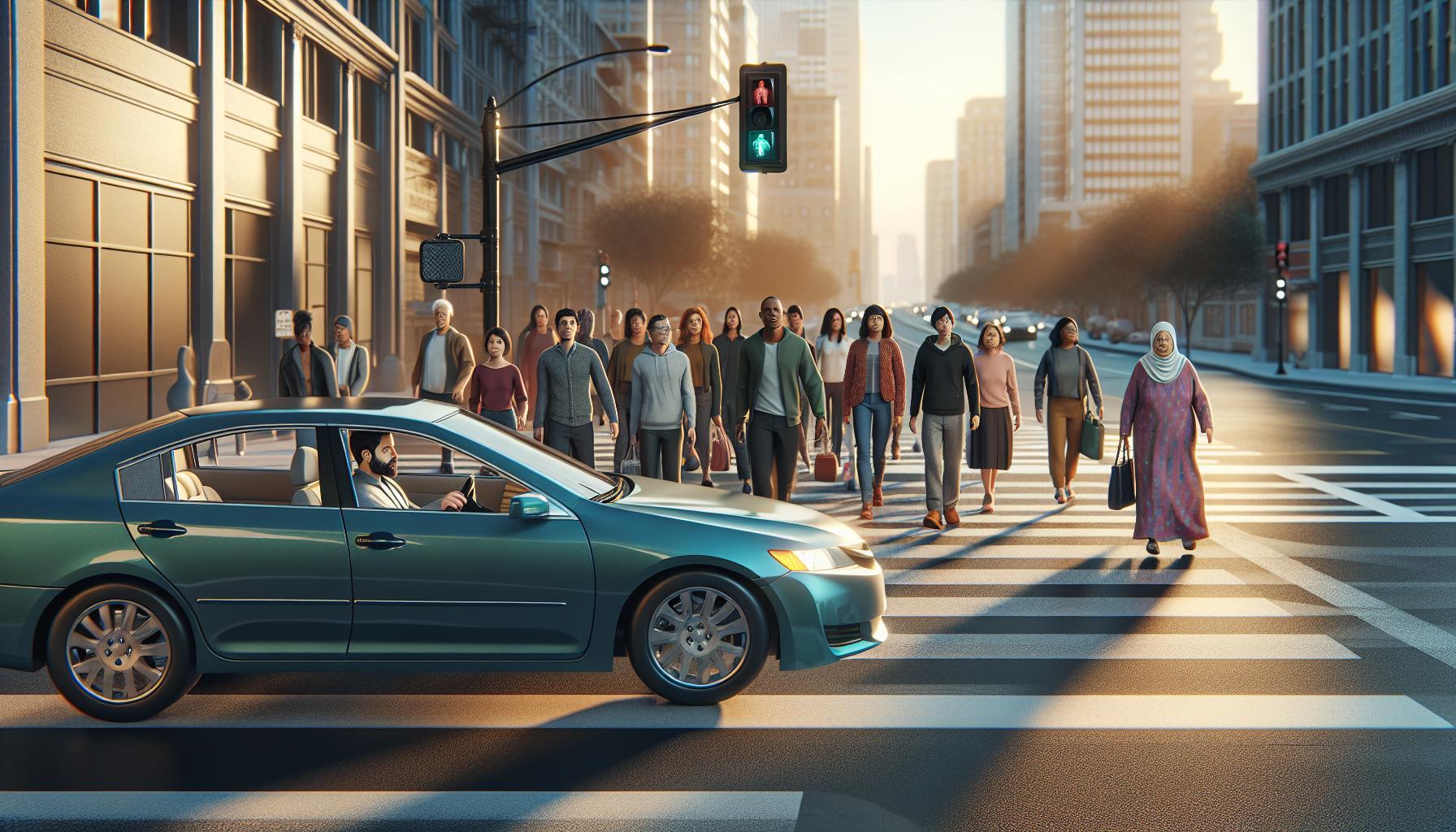
When you’re behind the wheel, it’s vital to recognize that pedestrians have the right of way. This road safety slogan isn’t just a polite suggestion; it’s a legal requirement in many areas designed to protect those on foot. As a driver, it’s your responsibility to be vigilant, especially in high-traffic areas like crosswalks, school zones, and densely populated urban streets.
It’s not enough to just look out for pedestrians; you need to anticipate their movements. Kids and pets can be unpredictable, and they depend on you to be cautious. Always slow down and be ready to stop when approaching crosswalks or any area where pedestrians are likely to be present. Yield to pedestrians—you’re in a protected vehicle, and they’re not.
Now here’s an eye-opener: the risk of severe injury to a pedestrian hit by a vehicle doubles for every 10 mph above 20 mph. So keeping your speed in check could literally save lives. High visibility should also be on your radar. In low light conditions or bad weather, pedestrians can be harder to spot, so extra attention is required.
Mindful driving includes respect for traffic signals and signs, but it also encompasses understanding how the rules apply to pedestrians. For instance, if a pedestrian is waiting to cross at a marked crosswalk, and the light changes in their favor, you must give them the opportunity to cross safely.
Awareness of pedestrian rights is more than just knowing pedestrians have the right of way; it’s about active engagement in road safety. Adjust your habits to ensure you’re always prepared to respond to pedestrian movements and remember, showing respect for those on foot is a reflection of your own commitment to road safety. Keep your eyes on the road, and always be prepared to yield to those walking—they’re counting on you to keep them safe.
11. “Turn signals save lives”

Using your turn signals is a simple yet powerful way to communicate your intentions to other road users. When you’re behind the wheel, the turn signal is your go-to tool to indicate whether you’re making a left or right turn, or if you’re about to change lanes. This not only prevents confusion but also significantly reduces the chances of an accident.
Consider the turn signal as your car’s way of talking to other vehicles. Without this communication, the road becomes a guessing game, an unwelcome situation that leads to needless fender benders or worse. Signaling early is a best practice as it gives other drivers ample time to react and adjust their driving accordingly.
- Always signal at least 100 feet before you turn or change lanes
- Check your mirrors and blind spots before signaling to ensure it’s safe to proceed
- Signal even when you don’t see other cars – a pedestrian or cyclist might be nearby
- Don’t forget to turn your signal off after you’ve made your move
Sometimes, drivers neglect to use their signals out of habit or haste. It’s crucial to break these bad habits and make signaling second nature. After all, it’s not just about your safety, but also the safety of everyone on the road.
Remember too that your signals are a form of courtesy. They keep other drivers informed, helping to manage the flow of traffic smoothly. A quick flick of a switch can prevent irate drivers and road rage incidents, contributing to a more respectful driving environment.
The practice of using turn signals is a fundamental aspect of defensive driving. It falls perfectly in line with the principles of being alert and attentive to ensure everyone’s safety. Just as you keep your distance, you should let your intentions be known – a flashing light could be all it takes to save a life.
12. “Arrive alive, don’t text and drive”
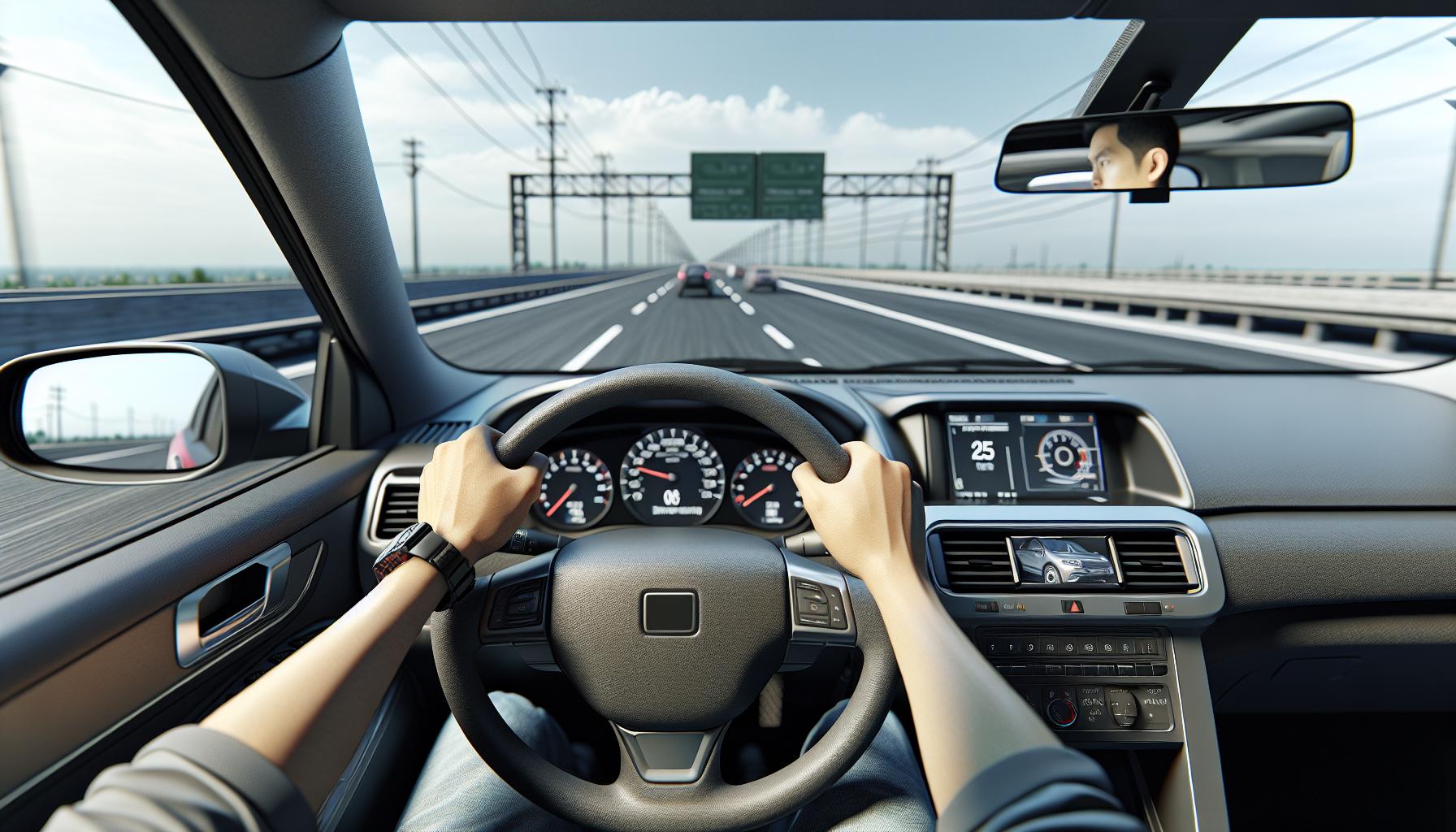
Road safety isn’t just about following the rules; it’s about making smart choices that protect you and others every time you hit the road. Let’s talk about one smart choice right now: stashing that phone out of sight when driving. Slogans like “Arrive Alive, Don’t Text and Drive” aren’t just catchy phrases – they’re life-saving reminders.
In today’s fast-paced world, it’s tempting to shoot off a quick text or scroll through notifications at a red light. But even a split-second distraction can lead to catastrophic outcomes. Operating a vehicle demands your full attention, and here’s why:
- Distracted driving is a leading cause of accidents.
- Texting while driving increases your risk of a crash by 23 times.
Distraction-Free Zones are crucial when behind the wheel. Creating a mental boundary that phones are not to be touched while driving can make all the difference in maintaining focus. Inform your friends or family that you’re driving and will return messages later to set expectations.
Implementing Safe Driving Apps is another strategy to help you stay on track. These apps can automatically silence notifications, helping you resist the urge to glance at your phone. Some even send auto-replies to let people know you’re operating a vehicle.
Remember, every time you get behind the wheel, you have a responsibility to yourself and to everyone else on the road. “Arrive Alive, Don’t Text and Drive” isn’t just a slogan, it’s a commitment – a promise to make every journey a safe one. So next time you’re driving, keep that phone out of reach. Your undivided attention on the road could save lives, maybe even your own.
13. “Buckle up, it’s the law”

The mantra “Buckle up, it’s the law” isn’t just a catchy slogan; it’s a legal directive that saves lives. Seat belt laws vary by state, yet they all underscore one fact: seat belts are crucial for your safety. You’ve likely heard the click of a seat belt countless times, a sound synonymous with the start of any car journey. Wearing a seat belt isn’t just a good habit; it’s your first line of defense in an accident.
Why Wear a Seat Belt?
- It keeps you firmly in your seat during a collision or sudden stop.
- It diminishes the risk of being thrown from your vehicle, which is often fatal.
- It spreads out the force from the collision over the stronger parts of your body.
The Statistics in Black and White
| Seat Belt Usage | Related Outcomes |
|---|---|
| 90% | Lives saved annually |
| 1 in 7 | People still not wearing seat belts |
Putting on a seat belt takes mere seconds, yet those seconds are among the most significant in ensuring your safety. When your car is in motion, you’re subject to the laws of physics, and a seat belt helps counteract those forces. Never underestimate the power of being strapped in; it’s designed to protect not just you but also other occupants in the car. Encouraging everyone in the vehicle to buckle up demonstrates responsible driving habits and protects those you care about.
Striving for zero fatalities on the road is a collective dream and wearing a seat belt is a step toward that. It’s not just about avoiding fines or complying with the law; it’s an affirmation that you value life—yours and those around you. Consider this the next time you’re in a hurry to leave. It takes longer to retrieve your phone from between the car seats than it does to fasten your seat belt, and the latter could just save your life.
14. “Drive safely, arrive happily”

When you hit the road, it’s not just about reaching your destination, it’s about getting there safely. The slogan “Drive Safely, Arrive Happily” is a catchy reminder of the importance of cautious driving. You’ve heard it before – safety first. And, honestly, there’s no room for debate on this topic, especially when you’re behind the wheel.
Driving safely isn’t rocket science; it’s a blend of common sense and good judgement. You know the drill – follow the speed limit, keep your eyes peeled for road signs, and never, ever text while driving. It’s the simple things that can make a huge impact on your safety and the well-being of others.
Let’s look at some numbers that might surprise you:
| Behavior | Percentage |
|---|---|
| Speeding | 26% |
| Distracted driving | 8% |
| Non-seatbelt use | 49% |
These statistics show how common it is for people to forget the basics. And guess what? You’ve got the power to change that. By committing to safe driving practices, you’re taking responsibility for your life and those you share the road with.
So why not make this your mantra? “Drive Safely, Arrive Happily” isn’t just a saying; it’s a promise to yourself and your loved ones. Stick to the rules, stay alert, and keep your hands on the wheel. After all, your life’s no rehearsal – there’s no retake if things go south.
Next time you start your engine, take a moment to remind yourself – there’s someone waiting for you, someone who cares. Make sure you get back to them, not just in one piece, but with a smile on your face. Safe driving isn’t just a choice, it’s a lifestyle. Choose wisely, for each trip is a testament to the value you place on every life’s journey.
15. “Road safety starts with me”
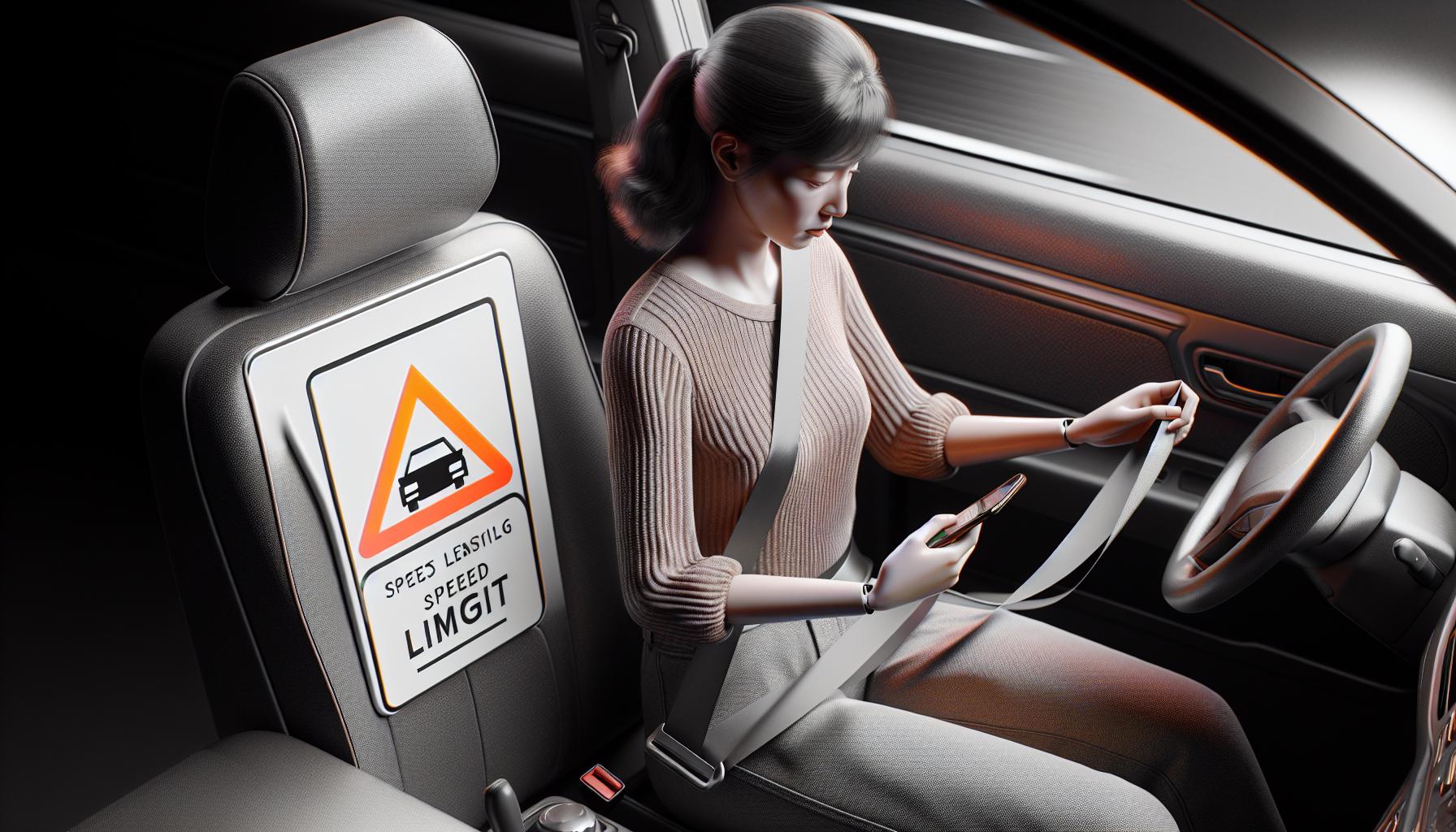
When you’re behind the wheel, it’s easy to forget that the safety of everyone on the road lies in your hands. But personal responsibility plays a crucial role in making the roads safer for all. The statement “Road Safety Starts with Me” isn’t just a catchy phrase—it’s a mindset change that begins with you. Adopting this mantra means you acknowledge your part in the bigger picture of road safety.
Here’s why this slogan matters so much:
- It empowers drivers to take charge of their actions.
- It’s a reminder that every decision, from buckling up to respecting traffic signals, contributes to overall safety.
- It shifts focus from what others should be doing to what you can do to prevent accidents.
Understanding Your Role
As a driver, recognizing your influence on road safety can’t be understated. You set the tone for your driving experience and potentially influence the behavior of others. Safe driving habits include:
- Consistently using your seatbelt.
- Sticking to the speed limit.
- Never driving under the influence.
- Keeping distractions like your phone out of reach.
By adhering to these guidelines, you’re less likely to be involved in an accident—not just as a statistic, but in reality.
The Ripple Effect of Safe Driving
Your commitment to road safety has a ripple effect. When others notice your consistent safety practices, it sets a standard that can inspire the same level of diligence. Think about the impact on new drivers or your own children—your actions are teaching them about road safety without saying a word.
| Safe Driving Behaviors | Impact |
|---|---|
| Wearing Seatbelts | Reduces fatalities by up to 45% |
| Observing Speed Limits | Decreases accident risk |
| Avoiding Distractions | Lowers chances of collision |
Adopting this personal responsibility approach serves as a foundation for a safer driving environment. Every journey you take is an opportunity to model responsible driving and make an impact. Pledge to be the driver who says “Road safety starts with me” and lives it out every mile.
Conclusion
Remember road safety’s not just a slogan—it’s a way of life. By embracing the principle that “Road Safety Starts with Me,” you’re making a commitment to your well-being and that of others. Every time you buckle up, adhere to speed limits, and stay focused on the road, you’re not just avoiding a ticket—you’re potentially saving lives. Let these slogans be more than catchy phrases; let them guide your actions every time you’re behind the wheel. Pledge to be that driver who not only recites but embodies these words. It’s your choices that make the roads safer for everyone. Drive responsibly and encourage others to do the same—it’s a shared journey toward safety.


